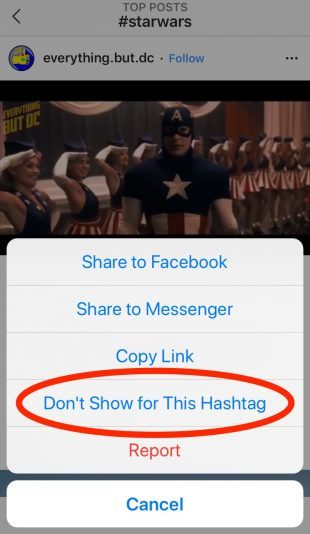The Latest Best Practices For Instagram Hashtags
While hashtags remain a key part of Instagram, the rules of when and how to use them have shifted over the last couple years, and former best practices have fallen out of vogue. Here we look at what new data can tell us about the most effective and smart ways to use Instagram hashtags today.
____________________________
Guest post by Bobby Owsinski of Music 3.0
Hashtags are an essential part of Instagram, but the rules of how they’re best used has changed over the last year or so. What worked in the recent past may now be ancient history, so dig in as we look over the latest data and make some suggestions.
First of all, its best to understand exactly what a hashtag is and what it’s not. First and foremost a hashtag is a keyword for a search. It makes it easy to find a particular topic. If we were looking for a type of music, for instance, we might search “#reggae” to help us find posts about it.
Relevant Hashtags
Vanity hashtags used to be all the rage but they actually get you nowhere when it comes to search. For instance, if you’re angry with someone or something and use “#immadatcityhall” (I’m mad at city hall) it accomplishes nothing but makes you feel good for a second. So the best advice is not to use irrelevant hashtags. They won’t be found in a search.
The Ideal Number
The number of hashtags that gets the best results has always been controversial. It’s possible to use as many as 30 on a plain photo post and up to 10 on a Story, although using that many really makes for a hard read. For the longest time 11 hashtags seemed to be the ideal number, but the general consensus in 2019 is that 5 or 6 works best. Some people (myself included) stick with 2.
Using Your Brand
If you have a strong brand for your music or as an artist, consider making that one of your hashtags. If your band is named “The Unsigned” for instance, #theunsigned, #theunsignedband or #theunsignedmusic could all be useful. That being said, the shorter the better for a branded hashtag and something like #unsignedband would work much better than the longer version. By the way, if you’re just starting out it’s probably too early to use a branded hashtag, but if you’re established with a fanbase, it may be helpful.
Use Niche Tags
A wide term like #music or #pop won’t be too helpful. Once again, think of a hashtag as a search helper. Doing a Google search for “music” will bring up about 100 million items, but it’s not going to help you find what you’re looking for. That’s why you have to stay niche. If you searched for “David Bowie” or #davidbowie you’re much likely to get a result you like. That’s why niche hashtags are far more helpful than broader ones.’
Finding The Best Hashtags
That’s brings up the question – “Where do I find these niche hashtags?” There are 3 places to check. The first is hashtags.org, then hashtagify.me, and finally keyword.io, among others. Remember that Keyword.io will give you lots of long-tail suggestions, but if you want specific hashtags (use either the Google or YouTube setting) you’ll have to use the “#” mark in the search.
Hashtags Can Be Bypassed

Finally, remember that on Instagram, hashtags can be bypassed by the viewer by hitting the “Don’t show this hashtag” option. If you’re using irrelevant hashtags, popular or trending hashtags that are being used too much, or the same ones over and over, the user can hide them. That means you should always think the use of hashtags through before you use them.
These are just some of the suggestions for using hashtags on Instagram, but they are up to date. Hashtags are a powerful tool, but only if you use them wisely.
I had a instagram account and worked really hard to gain followers but without knowing the process and hack to do it. After learning more about hastags and the importance of using it. I applied the rule and i made about 20+ followers in a single day/